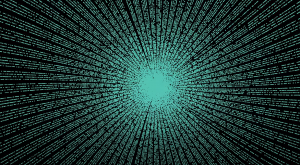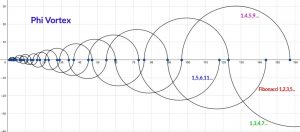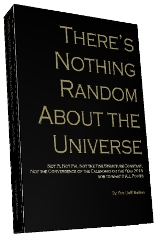I want to start off by saying, I hope you felt the shift last week.
It’s the children, especially the youngest and most innocent and purest amongst us who recite the 4 questions.
The future belongs to the children. Moshiach is here for the children and because of the children.
Why is this night different from all other nights? Because this night Moshiach will come.
We’ve previously alluded to the connection to Moshe (Moses) and Matzah, and we’ve gone in depth into all the wisdom conveyed to Moses in the phrase (Mah Tizach Alai) “Why you crying out to me” now lets bring it together with chametz and Matzah.
On Pesach (Passover) it’s the children who find the Afikoman and get their wishes fulfilled, and it’s the children who recite the 4 questions, which begin with the word Mah (MH) Nishtana….
The gematria value of Adam, man, is 45, the same as the aspect of the Tetragrammaton called M”H (Zeir Anpin), which we refer to as Heaven, the 6 dimensional link between our plain of existence (malchut) and the upper realms.
The gematria of Moshe is 345, and the name itself (MShH), like matza (MZH), includes the M”H. Matza (MZH), which we are commanded to eat on Pesach, has the gematria of 135 or M”H (45) plus 90. This is, of course, 135 = 3 x 45, but it’s also M”H (45) plus 90, which is the gematria value of Mayim (מים), water, one of the two ingredients in Matzah, and also of Melech (מלך), King. And Moses, as every school child knows was thrown in the water (Nile) to begin his journey as king (90) of man (45) on earth. It was on the 7th day of Pesach when it happened, the same day the Red Sea split 80 years later.
So let’s look at the 4 Questions, which begin with MaH. We know from chazal that it is through the understanding of the 42-letter Name (Ana B’koach) that we’ll reach the geula (the final redemption) and thus it’s interesting that just as in the Ana B’koach, in the 4 Questions there are 42 words (representing the 42 letters) and 6 additional words. In the case of the 4 questions, it’s the first line “Why is this night different from all other nights?” And in the case of the Ana B’koach it’s the silent Baruch Shem C‘vod Malchuto L‘olam V‘ed.
This is not only interesting but important because each of the 4 questions starts with the 4 letter word Shebecol (ShBCL) meaning “all other” and as per our last article, this word carries the kamatz hagadol, representing the sefira (dimension) of keter (crown), beneath the caf (C), which itself represents keter, the highest dimension. The kamatz hagadol is comprised of a horizontal letter vav (V) of numerical value 6 and a dot beneath it of numerical value 10.
And when we add the Vav (V) of the kamatz hagadol to the 4 letter word Shebecol (ShBCL) we get a gematria value of 358, that of Moshiach, thus each of the 4 questions begins with the answer to “why is this night different from all other nights:” Mashiach.
Now, the word Shebecol (ShBCL) with the Vav (V) of the kamatz hagadol and the Mem (M) formed by the 4 vavs of the 4 kamatz hagadol (or alternatively the value 40 of the 4 dots of the same 4 kamatz hagadols) is also an acronym for Baruch Shem Cavod Malchuto L‘Olam V‘Ed.
This is the verse we whisper after reciting the Schema and the Ana B’koach and that Jacob recited to his sons when he was blessing them and explaining about the geula. The Midrash also says it’s a verse Moses took from the angels “Blessed is G-d whose glorious sovereignty is forever and ever,” and elsewhere that this verse was recited instead of the word Amen in the Holy Temple. It is certainly said aloud by all of us on Yom Kippur and in response to the High Priest’s pronunciation of the Holy Name (42-letter Name) in the Holy of Holys on Yom Kippur in the days of the Holy Temple.
Why 4 Questions and 4 shebecols and 4 Kamatz Hagadol? It’s an obvious connection to the 4 letters and phases in the Tetragrammaton (YHVH) of numerical value 26 and even more obvious when we consider that the question Mah Nishtanah… (why is this night different from all other nights?) has 26 letters.
As for the 4 questions themselves, the numbers of letters in them (40, 42, 50, and 54) correspond to the number of chapters in Exodus (40); Genesis (50); the 42 Letters (and the 42 journeys from Exodus to the Promised Land); and number of portions in the Torah (54), while the total plus the kolel of 1 (40, 42, 50, 54 and 1) = 187, the total number of chapters in the Torah.
And while this puts the entire Torah in the mouths of the children, if we add the 186 letters plus the 26 letters, we get 212, the value of H’or (“the light”) and if we then add the 42 words we get 228, the value of baruch (blessed) and V’ydaber (says) as in G-d says to Moses. But most significant of all is when we add the 4 of the 4 questions and get 232, the full sum of the 4 aspects of the Tetragrammaton (Av, Sag, Mah, Ban).
And thus we see by this simple act of saying 4 innocent questions, the youngest at out seder tables are reciting the full Name of G-d, the 42 letter Name of G-d, and connecting to all the chapters and portions of the Torah.
When the children speak Mashiach comes.
Even the details of the questions hold answers. the gematria value of chametz and matzah (ChMZ V’MZH) in the first question is 1089, the same as the first 9 words (32 letters) of the 13 attributes, which correspond to the 9th sefira (Chochma/wisdom) and the 32-gates of wisdom. And as R’ Chaim Vital of blessed memory explains, all light of the Torah is spread through squaring and thus there is hidden wisdom and light in 1089 or 332, and we find it in the gematria sofit of those 9 words, 3339 or 57.782 as in 5778 HC, 9 years from this revelation.
(By the way, since both the standard gematria and the gematria sofit of these 9 words are wholly divisible by 9, it’s also noteworthy that the sum of ordinal value of these 9 words is also 288 or 32 x 9; and that the sum of the small gematria of the 9 words is also wholly divisible by 9, (8666 x 9); and likewise that the sum if the first letters of the 9 words is 243, or 27 x 9.)


![Reblog this post [with Zemanta]](http://img.zemanta.com/reblog_e.png?x-id=743d6cf1-f5b9-4808-84f9-11a88887ff08)


